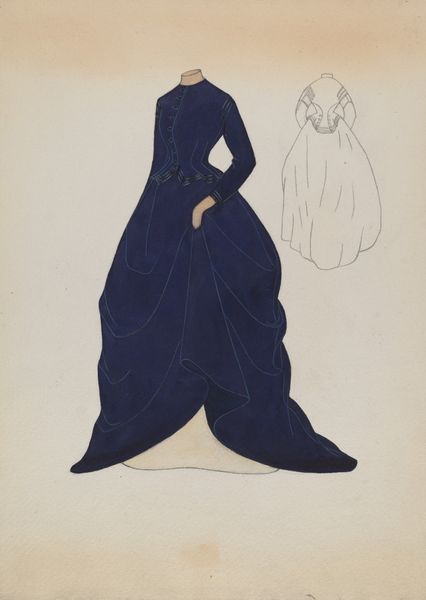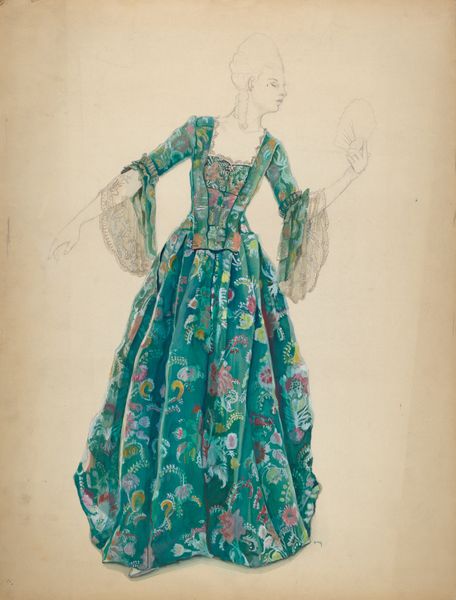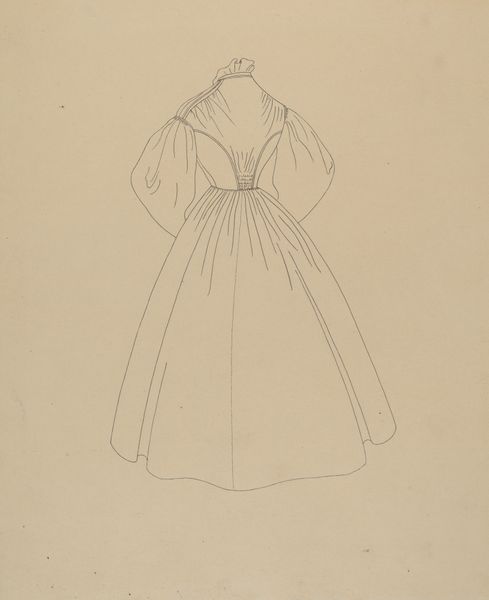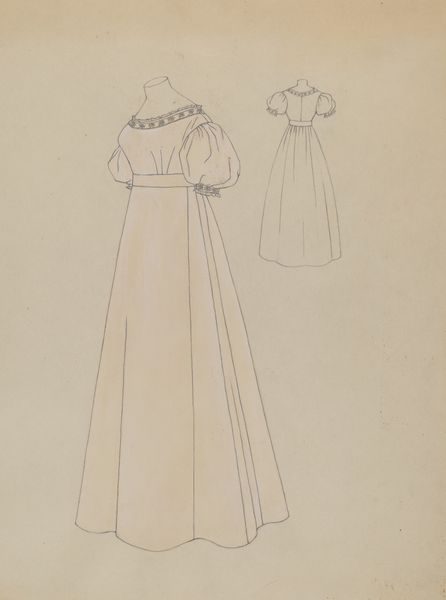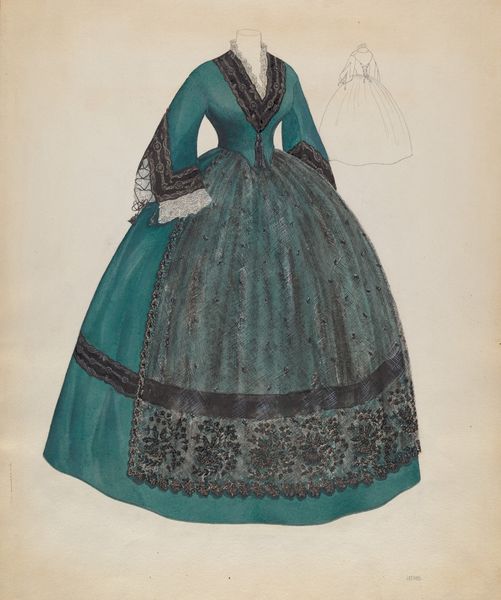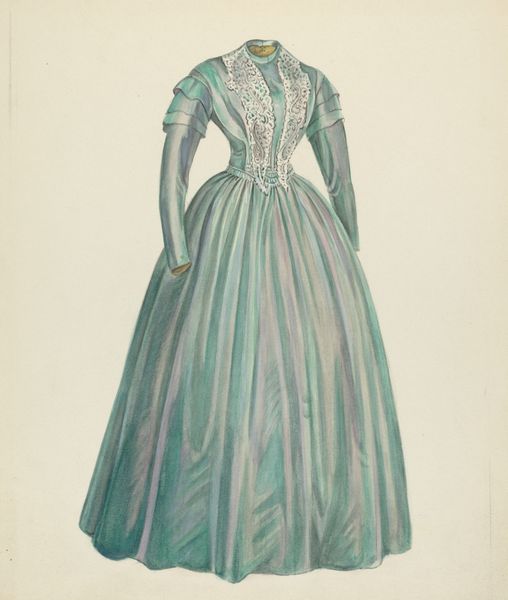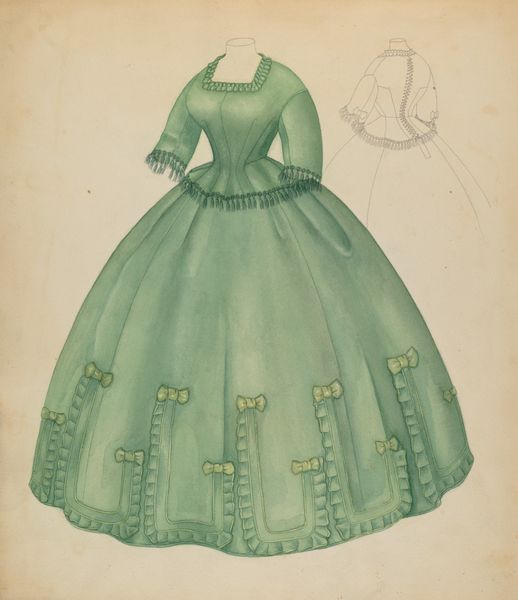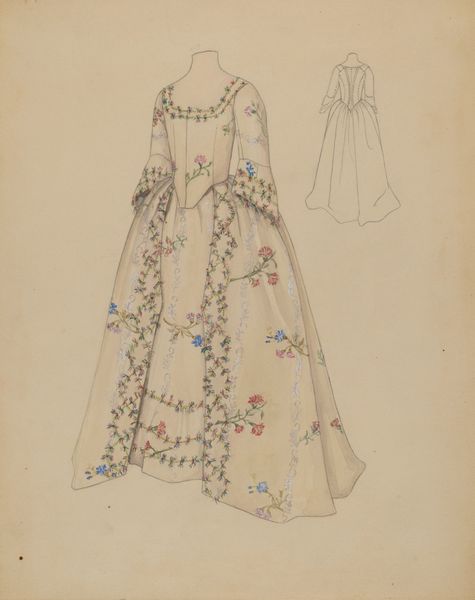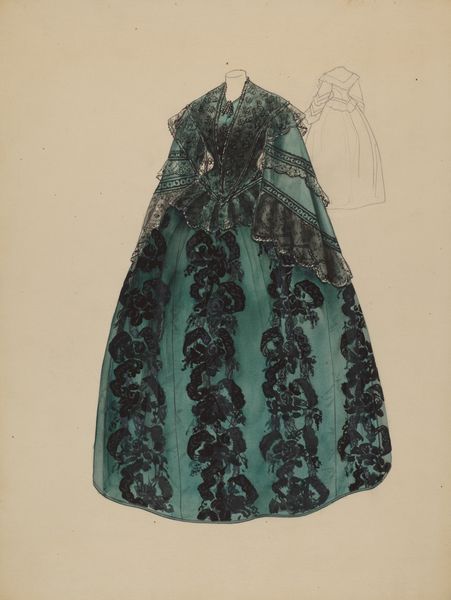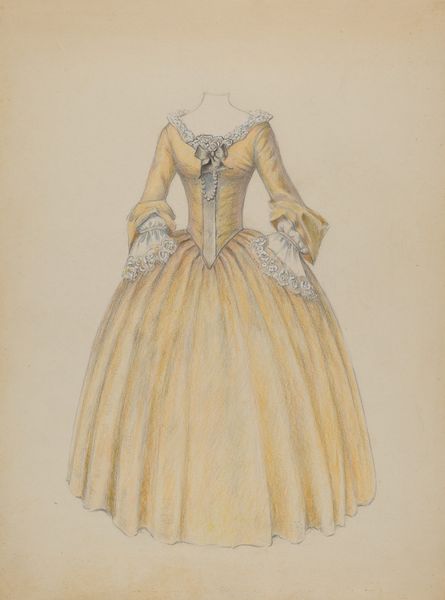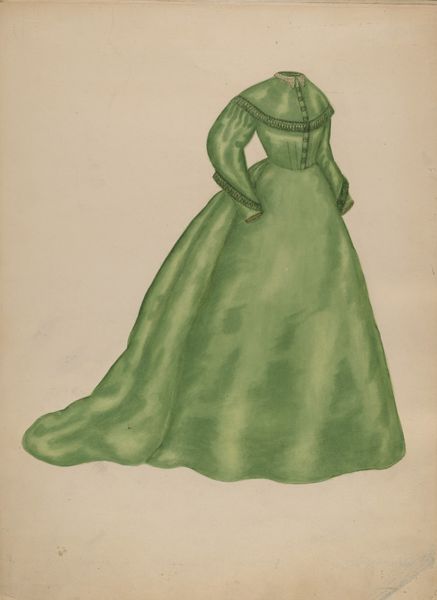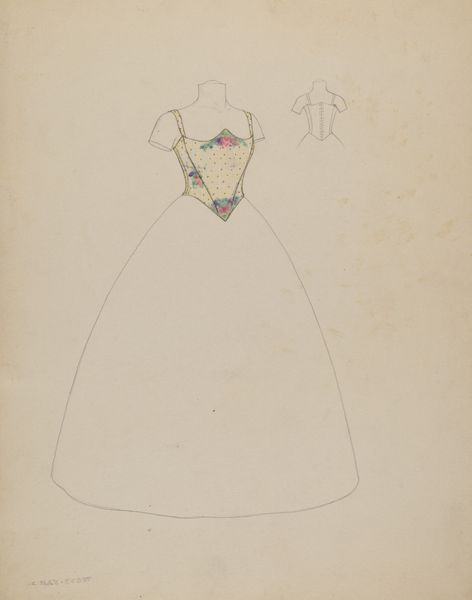
drawing
#
drawing
#
toned paper
#
light pencil work
#
pastel soft colours
#
pencil sketch
#
light coloured
#
retro 'vintage design
#
personal sketchbook
#
historical fashion
#
pencil work
#
watercolour illustration
Dimensions: overall: 30.2 x 22.5 cm (11 7/8 x 8 7/8 in.)
Copyright: National Gallery of Art: CC0 1.0
Curator: Before us, we have Gladys Cook’s “Bodice,” a drawing from circa 1936. It looks like pencil work on toned paper. Editor: It feels ephemeral. The pale colors and light touch make it seem almost like a dream, or a half-formed memory. Curator: Indeed, the composition reinforces that. Notice how Cook employs very simple lines to convey an object while at the same time achieving remarkable textural differentiation, as with the plaid emerald texture on the titular item contrasting the broad, blank skirt. The eye follows the swift execution that only suggests materiality rather than fully realizes it. Editor: It makes me think about the countless hours, the skilled labor of dressmaking. You’re right about the material suggestion – the skirt feels weightless in contrast to the defined corset. But this begs the question – who made the actual garment? Was this an in-house design? How were workers involved in the production line of dresses and their designs acknowledged during the mid-thirties? It raises all kinds of issues around design, production, and labour. Curator: I appreciate your perspective, especially as it leads us to think about semiotics, and what these objects symbolize. The soft watercolor illustrations remind one of delicacy and, arguably, constraint of women's bodies. This is further complicated by the context of its creation during an era defined by both economic hardship as well as evolving societal ideals concerning femininity. Editor: I see what you’re saying, but looking again, there's a definite craft aspect, right down to the shading and the rendering of different material densities, this is not only technical ability but time, studio and skill. Even the unfinished quality emphasizes making. Curator: Ultimately, “Bodice” speaks to the beautiful synthesis possible in drawing. How form and subject intersect, as the drawing holds historical, sartorial, and gendered implications. Editor: I’m struck by how the drawing acts as an artifact, embedding multiple human processes from labor and craft and bringing questions on the status of both design and drawing to the fore.
Comments
No comments
Be the first to comment and join the conversation on the ultimate creative platform.
